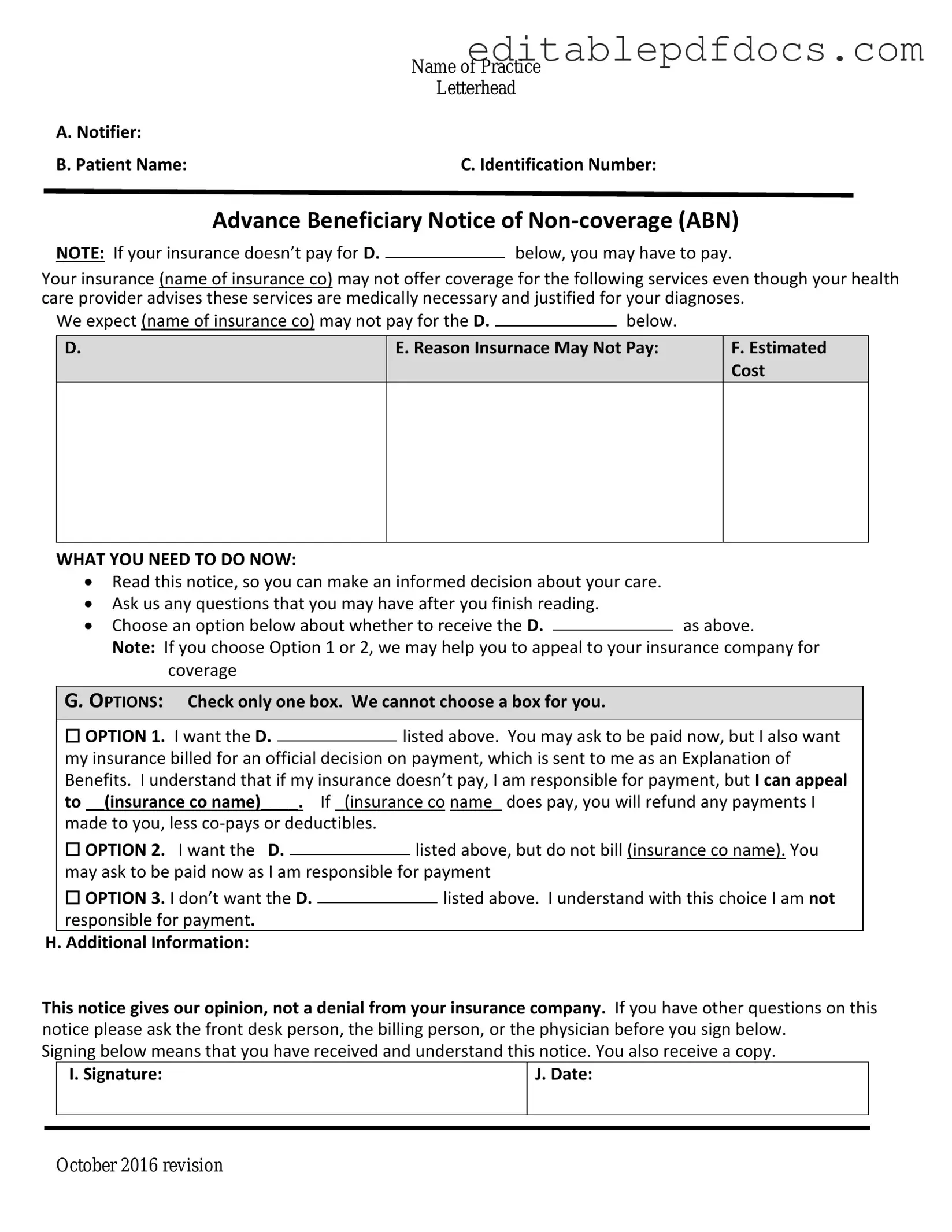Fill a Valid Advance Beneficiary Notice of Non-coverage Template
The Advance Beneficiary Notice of Non-coverage (ABN) is a notification provided to Medicare beneficiaries when a service or item may not be covered by Medicare. This form informs patients about their potential financial responsibility and helps them make informed decisions about their healthcare. To ensure you understand your options, consider filling out the ABN by clicking the button below.
Open Editor Now
